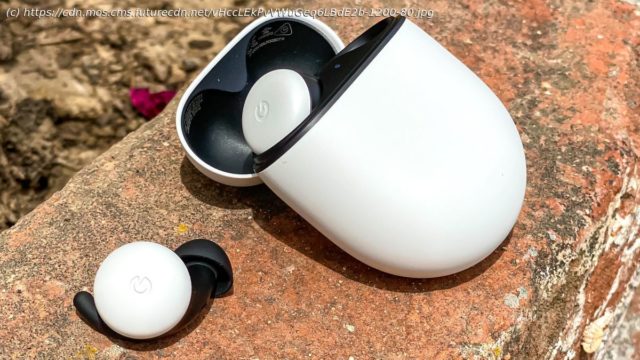The Google Pixel Buds are feature-packed, but these aren’t exactly the ‘AirPods for Android’ you’ve been waiting for.
The new Google Pixel Buds might feel like a zeitgeisty knock-off of the work Samsung and Apple are doing, but they do in fact bring something new to the table: an always-listening Google Assistant. That may seem like a small feature, but up until now Android devices haven’t exactly had a complete Apple AirPods-like solution. Sure, there have been some absolutely incredible true wireless earbuds like the Sony WF-1000XM3 that cater to that crowd, but they still weren’t entirely in sync with your Android device. The new Google Pixel Buds are. Not only do they sync up to your Pixel phone the second you open the case near them the same way AirPods sync up to iOS devices, but if you enable Google Assistant, you’ll be able to talk to it at any point by saying the wake words – again, just like AirPods. But unlike their Cupertino-contrived competition, Google’s Buds offer live language translation as long as you have connection to the Internet, which is a game-changer for all the mono-linguists out there. That said, while the Google Pixel Buds seem to offer the best compatibility with Android devices, they don’t offer any form of active noise cancellation, middling on-board battery life of about three hours and cost more than other comparable earbuds from Sony and Samsung. Worse, they also have some of the weakest sound quality of any true wireless earbud we’ve tested so far in 2020. It’s warm, treble-heavy and for folks with a sensitivity to hi-hat clashes and sibilance, they’ll wear you down after a half-hour of listening. There’s no debating that these are a huge improvement on the original Pixel Buds and a fine companion for your Google Pixel 3, Pixel 3a or Google Pixel 4 smartphone. The feature-set alone is a marked improvement and Google has clearly paid attention to what customers are looking for in terms of ease-of-use and sleek design. Where the Pixel Buds could still improve is in their sound quality and lack of active noise cancellation tech. There are a number of other earbuds out there that sound better and cost less, or cost more and include noise cancellation. As much as we appreciate the feature set of the Google Pixel Buds for Pixel owners, the less-than-perfect audio quality, lower battery life and loose fit keep the Google Pixel Buds from receiving our unbridled recommendation. [Update: Pixel Buds users can now use Find My Device to locate their earbuds should they go missing. According to 9to5Google, users have noticed their Pixel Buds are listed upon logging into the app. The earbuds are also due a software update in the coming weeks, though Google is yet to reveal the full details.] The Google Pixel Buds arrived in stores in the US on April 27, 2020, available in four colors – Oh So Orange, Clearly White, Quite Mint, and Almost Black. They then arrived in the UK on July 13, 2020, but only in the Clearly White hue. The UK will get treated to Almost Black later in the year, but the orange and mint options aren’t making their way across the Atlantic. In the US and UK, the Google Pixel Buds price is $179 / £179, which means the Pixel Buds are more expensive than the second generation Apple AirPods (with wireless charging case), Samsung Galaxy Buds Plus and even the five star Sony WF-1000XM3. In Australia, they’re about the same price as all of these contenders. For around $50 / £50 less you can get the Samsung Galaxy Buds Plus that have a 12-hour on-board battery and 12-hour charging case, and for $10 / £10 less you can pick up the Sony WF-1000XM3 that have active noise cancellation – a supremely helpful feature for commuters and frequent travelers that you won’t find on the Pixel Buds. In Australia, however, the latest Pixel Buds are AU$279, which is actually a good deal cheaper than all of the contenders mentioned previously, so it’s worth bearing that in mind when making your decision.






